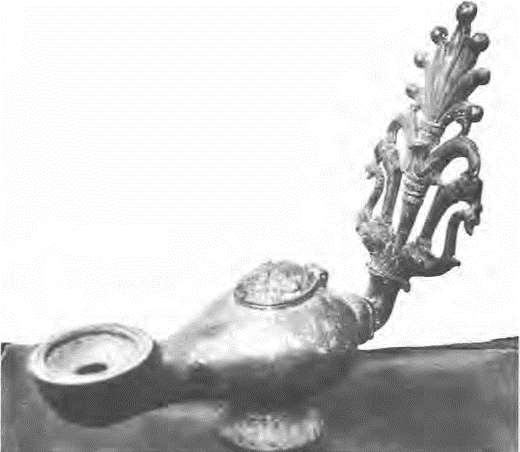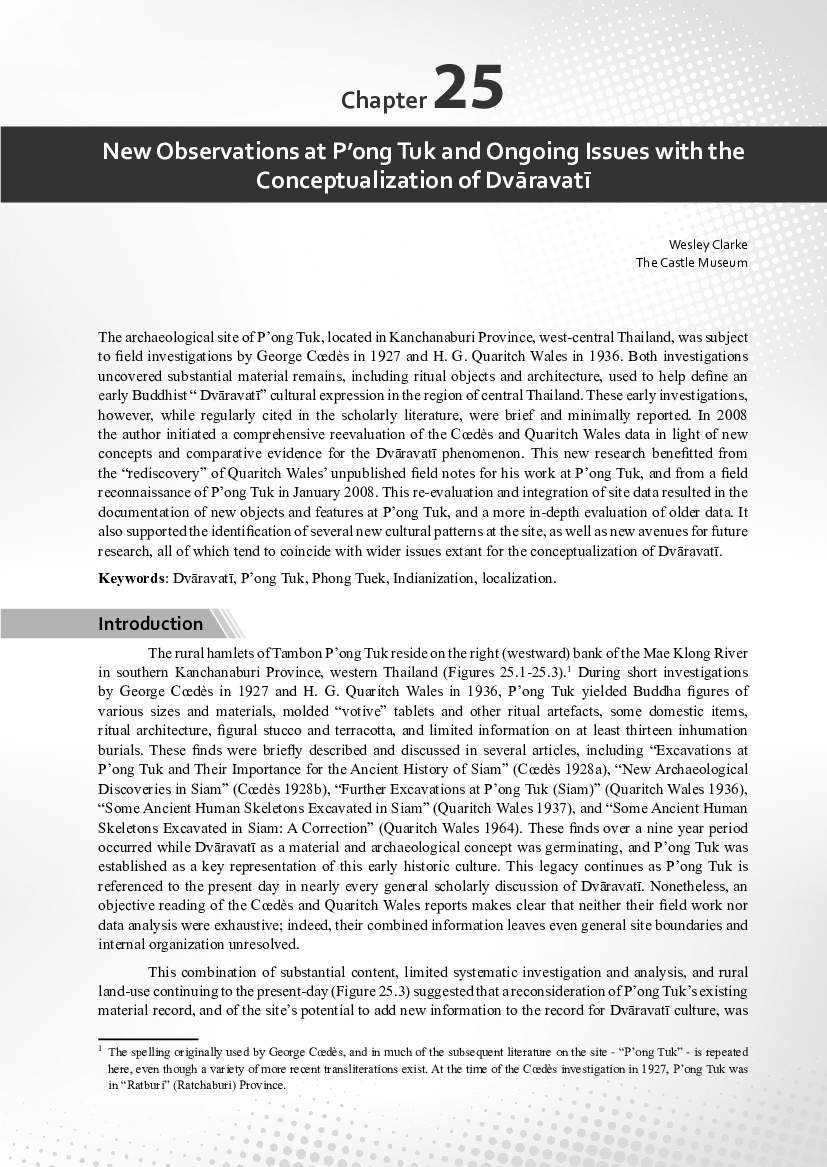New Observations at P’ong Tuk and Ongoing Issues with the Conceptualization of Dvāravatī
by Wesley S. Clarke
Revisiting the Pong Tuk site in West-Central Thailand, initially explored by G. Coedès (1927) and H. G. Quaritch Wales (1936).

Publication: ISBN 978-616-7961-14-9 | SEAMEO SPAFA Regional Centre for Archaeology and Fine Arts, Bangkok | Editor: Noel Hidalgo Tan
Published: 2015
Author: Wesley S. Clarke
Pages: 15
Language : English
pdf 8.0 MB
From the author’s remarks: ‘Certain Dvāravatī ritual forms (e.g. repetition of the mudra on both hands of an image, the prevalence of the vitarka mudra, the monumental cakra wheels, and the “Banaspati” iconography) indicate a new synthesis of Buddhist practice distinct from forms in South Asia. Most of these new forms have been documented at P’ong Tuk, and additional patterns at the site, such as the close spatial positioning of inhumation burials and ritual architecture (Clarke 2014), may further describe an early Southeast Asian admixture of Indic and indigenous practices. The combination of Buddhist and Brahmanical elements, as well as non-local and indigenous ritual elements, is typical of Dvāravatī settlements.’
‘The Visnu figure uncovered at P’ong Tuk also exhibits elements that appear to have connections to the northwest, and also to Khmer and Cham sculpture to the east.’
From: Advancing Southeast Asian Archaeology 2013, Selected Papers from the First SEAMEO SPAFA International Conference on Southeast Asian Archaeology — (Chonburi, Thailand 2013)
Photo: The famous Pong Tuk Lamp, Bangkok National Museum. Read Robert L. Brown and Anna M. Macdonnel’s study on this artefact, published in The Journal of Siam Society.
Tags: Dvaravati, Thailand, pre-Angkorean, Brahmanism, Pre-Buddhism
About the Author

Wesley S. Clarke
Wesley Clarke is an American registered professional field archaeologist with some forty-five years experience, who conducted his first Southeast Asian research in 1974 in northern Thailand for an undergraduate thesis in anthropology at Prescott College (Arizona).
Since 2003, he has been involved with archaeological research in Cambodia and Thailand, most recently focusing on issues surrounding the Dvāravatī cultural concept. He has a Master’s degree in Southeast Asian studies from Ohio University (Athens), and is on the staff of The Castle Museum (Marietta, Ohio) as a specialist in cultural heritage management.

